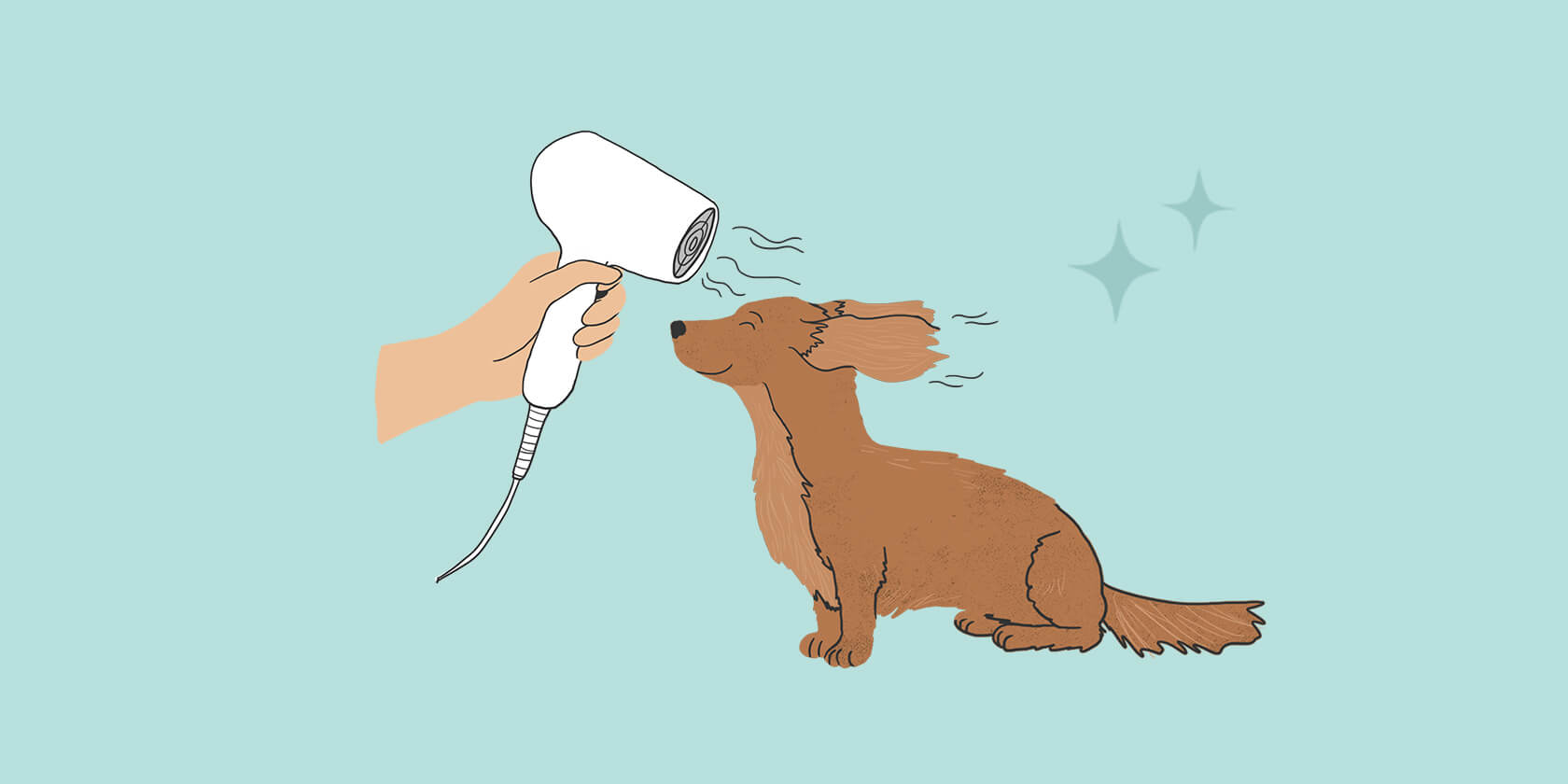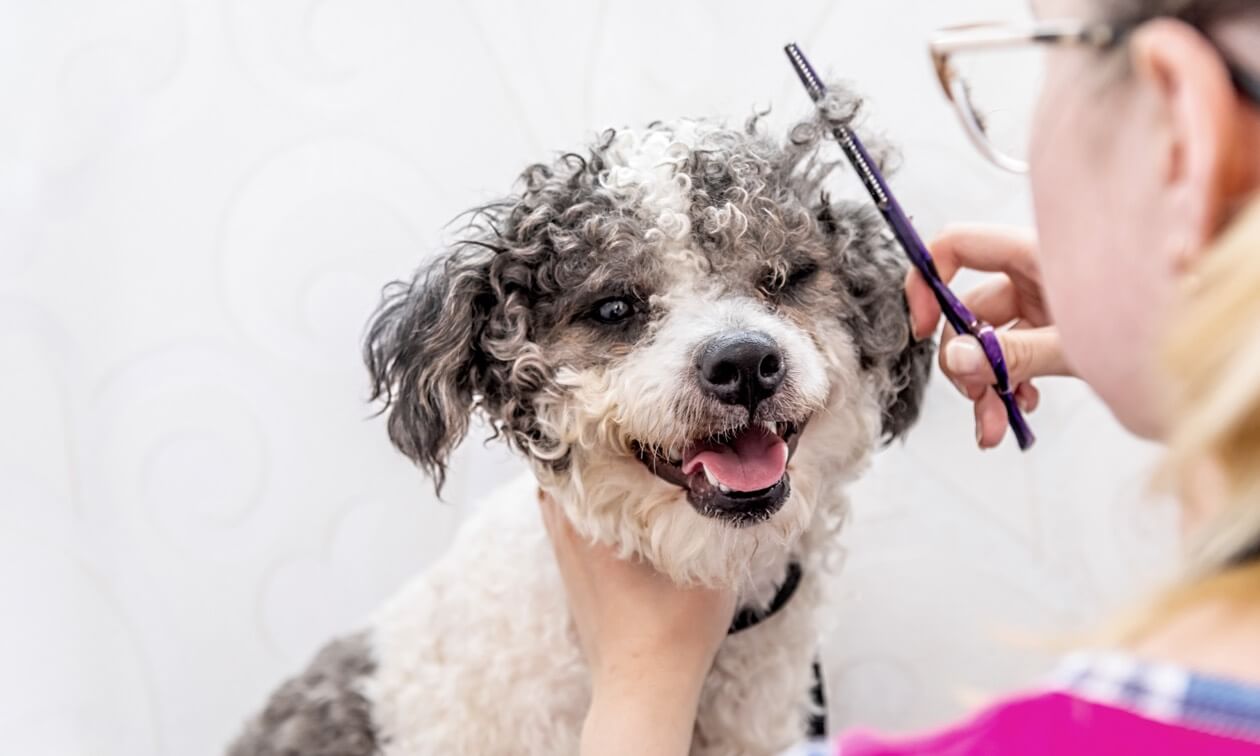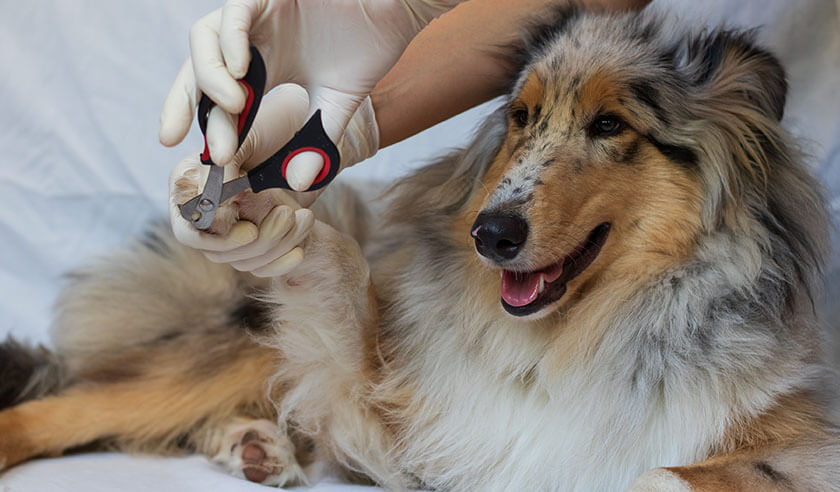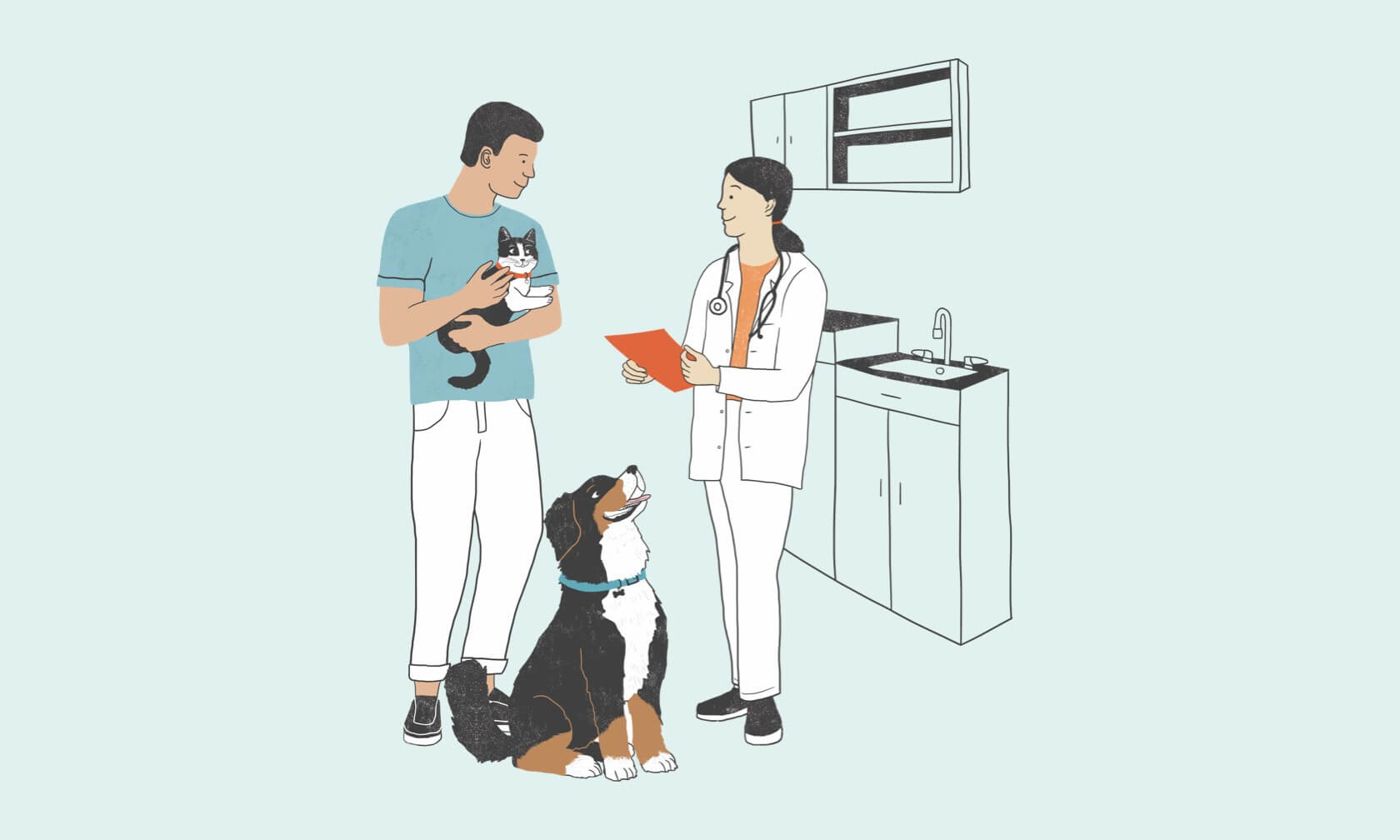While you might be able to bathe your dog at home when needed, a grooming appointment can save you time and get your dog squeaky clean and looking dapper. Some dogs require frequent and regular professional grooming due to their coat type, such as Poodles or Shih Tzus. Other breeds, such as Huskies or Labs, don’t need haircuts but will benefit from a full scrub and brush out to remove excess undercoat and cut down on shedding in your home. If you have a dog who doesn’t do well with being bathed at home, working with a professional groomer can help them learn to love their spa days.
Booking Your First Appointment
You may be surprised to learn that grooming appointments can book out months in advance! This is especially true during the holiday season when everyone wants their dog to be sparkly and fresh for family events. Plan at least a month to six weeks in advance for grooming appointments that include haircuts. Bath and blow dry only appointments are typically easier to book within two to four weeks. However, if your dog’s bather or groomer is popular, you may need to schedule further in advance.
If your dog requires frequent grooming, schedule standing appointments for 6 to 12 months ahead of time, so you aren’t scrambling last minute. Regular grooming also helps prevent matting which can be uncomfortable for your pet and can cause skin problems if not addressed.
Make sure your dog is up to date on required vaccinations. Many grooming salons will ask for proof of a rabies vaccine, as the state usually requires this. Although rabies may be the only legally required vaccine, it’s best to have your dog’s core vaccines up to date as well as consider vaccinating for infectious respiratory diseases including Bordetella and canine influenza. Ask your vet what vaccines they recommend.
Make sure to inform your groomer of any medical conditions your dog may have. This way, they can ensure that they provide dogs with needed breaks, be extremely careful with tender areas, or skip parts of grooming that can cause unneeded stress.

How Long Does a Dog Grooming Appointment Usually Take?
The length of your dog’s appointment is dependent on whether they are getting a full groom, partial groom, or just a bath and blow-dry. It also depends on what breed, coat type, and length of hair they start with.
Typically, a bath and blow-dry for a Labrador Retriever lasts 1 to 2 hours. This would be shorter for a smaller dog with a single-layer coat, such as a Boston Terrier. A Corgi might take just as long as a Labrador because they have a thick double coat. A thick-coated breed, such as a Newfoundland, may require three hours for a bath and blow-dry to allow for enough time to completely dry and brush out the coat thoroughly.
When you add on hair cutting, appointments can take between 1.5-4 hours. If your dog requires a lot of scissoring or has matted fur, it may take even longer. A groomer may schedule extra time for senior dogs or those with mobility issues to allow for breaks from standing on the grooming table.
What Happens During a Dog Grooming Appointment?
What’s included in your dog’s grooming will depend on what breed they are and what services you’ve asked to be done. Some groomers include certain services in their normal grooming charge, while others offer extras as add-on options that must be requested.
- Dropping off Your Dog
Make sure to speak directly with your groomer about what you’d like done (or not done) during an appointment. If you want a particular haircut style, discuss and show them pictures to help clarify your expectations. A groomer will be able to tell you what’s possible with your dog’s coat before beginning the groom. Don’t be offended if your desired haircut isn’t possible — often matting in the coat, the starting length of the coat, or even the texture of a dog’s coat can make certain cuts impossible to achieve. This pre-haircut discussion will also prepare you for any necessary shaving due to matting that your groomer might feel in your dog’s coat, rather than arriving to pick your dog up and being shocked by a short haircut. - Bathing
Typically, most grooms begin with thorough bathing to clean the coat and prepare it for cutting. A coat must be completely clean and dry to get an even haircut. In some cases, a groomer will do what’s called a “rough cut” with clippers before a bath to remove excess length or matting. This makes bathing more effective and easier for both your dog and the groomer. The clippers a groomer uses for rough cuts are different from the clippers they use after a dog’s coat has been bathed to ensure that the blades are clean and cut evenly. - Blow-Drying
Before using clippers or scissors to cut your dog’s coat, a groomer will thoroughly blow-dry it. Ideally, this will be done by hand with a special grooming blow dryer, which can take quite some time! For double-coated breeds, a groomer often blows out the coat before bathing to remove dead undercoat that would otherwise get stuck in the bathtub drain during bathing. In some grooming salons, standing blow dryers are positioned around the dog to speed up the drying process while the groomer hand dries a different area of the body. - Brushing
Your dog’s coat needs to be free of tangles and as straight as possible before any haircutting. Otherwise, the cut could be uneven, or matted fur can get caught in the clippers. Your groomer will brush your dog’s coat out both during blow-drying (to get it as straight as possible) and afterward to remove any excess fur. - Haircut
If your dog’s coat needs a trim, a groomer will usually use clippers to cut down your dog’s hair to a particular length. Clippers are usually used, if appropriate for a dog’s coat, for all-over body haircuts, or for areas that need shorter lengths, such as the sanitary area or paw pads. A groomer may use grooming scissors for dogs that need more of a touch-up or trimming in only certain areas. Groomers will also use scissors for shaping around a dog’s head, ears, legs, skirt, and tail.
Grooming add-ons:
- Nail Trimming
Groomers often include nail trimming as part of a grooming service or offer it as a standalone service. If you prefer to have your dog’s nails rounded down with grinding (using a Dremel) rather than cut straight across with traditional clippers, be sure to request this at drop-off. - Ear Cleaning
Cleaning your dog’s ears with specially formulated cleaner after a bath is recommended to help prevent ear infections. However, if your dog is prone to ear infections, ask your veterinarian whether you should skip ear cleaning at the groomer or if they’d recommend a specific ear cleaner be used. - Anal Gland Expression
Groomers are only trained to do external expressions of anal glands, which is different and not always as effective as internal expressions that a veterinarian would perform. In some cases, external expressions can exacerbate anal gland problems for dogs. It’s best to check with your veterinarian before asking a groomer to express your dog’s anal glands. - Sanitary Trim
A sanitary trim can help you keep the fur around your dog’s bum and privates clean and tidy. Sani trims are especially helpful for senior dogs with long, wispy fur on their rear, where feces or urine may get caught. - Paw Pad Area Trim
Trimming the fur that grows between your dog’s paw pads can increase their traction on slippery ground and prevent ice buildup between their toes.
ZPC-01672





